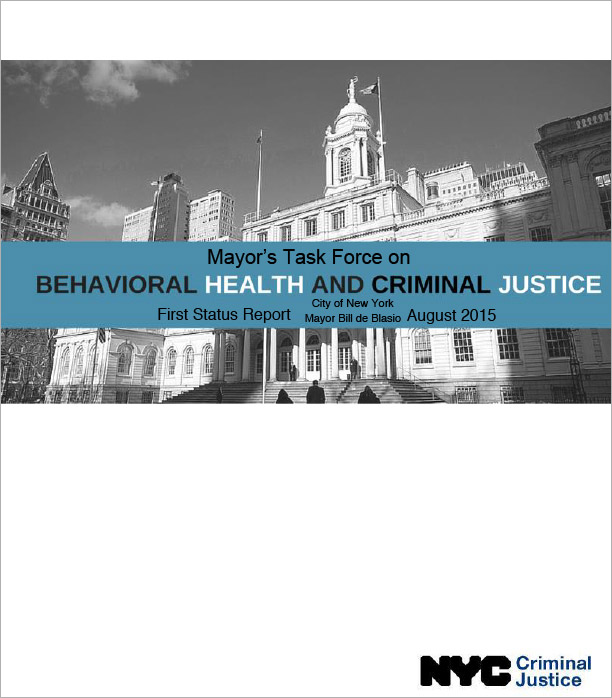Mayor's Task Force on Behavioral Health and Criminal Justice
In December of 2014, the de Blasio administration released the action plan developed by the Mayor’s Task Force on Behavioral Health and the Criminal Justice System. The action plan outlines a comprehensive blueprint to continue to drive down crime while also reducing the number of people with behavioral health issues who cycle through the criminal justice system.
The recommendations of the Task Force focus on ensuring that, when appropriate, individuals with behavioral health disorders:
- do not enter the criminal justice system in the first place;
- if they do enter, that they are treated outside of a jail setting;
- if they are in jail, that they receive treatment that is therapeutic rather than punitive in approach; and
- upon release, they are connected to effective services.Over the last twenty years, New York City has experienced the sharpest drop in crime anywhere in the nation.
As crime has fallen so has the City’s jail population – on the last day of 2014, there were fewer than 10,000 individuals detained at Rikers for the first time since 1984. New York City has one of the lowest jail detention rates of any city in the country: 1.15 per every 1,000 residents.Despite our success in reducing the overall jail population, the number of people with behavioral health issues has stayed largely constant, with individuals with behavioral health issues comprising a bigger and bigger percentage of the total number incarcerated. While in FY 2010, people with mental illness were only 29% of the NYC jail population, today they represent 38% of the overall jail population; approximately 7% of the jail population is made up of individuals with serious mental illness, and approximately 46% of inmates in the NYC jail system report that they are active substance users, although we believe the actual prevalence of substance use to be much higher.Many justice-involved individuals with behavioral health needs cycle through the system over and over again, often for low-level offenses. For example, approximately 400 individuals have been admitted to jail more than 18 times in the last five years. This same group accounted for more than 10,000 jail admissions and a collective 300,000 days in jail. ii While we have been demonstrably successful in reducing crime and incarceration in many areas, the issue of how to address the needs of people with behavioral health issues remains a stubborn question that the Task Force set out to solve.
The Task Force worked to ensure that we establish the systems to address appropriately the risk and needs this population presents. Over 100 days, the Task Force developed 24 interlocking public health and public safety strategies that address each point in the criminal justice system and the overlap among those points. Recognizing the interdependent and intersecting nature of the behavioral health and criminal justice systems, the Task Force identified five major points of contact: on the street, from arrest through disposition, inside jail, during release and re-entry, and back in the community. The comprehensive strategy developed by the Task Force is backed by evidence and informed by widespread expertise.
These are complicated issues, and while some of the elements of this action plan represent immediate steps, they are the first steps of a broader strategy that is long- term and ongoing. It will ensure that we continue to drive New York City’s crime rateeven lower by reliably assessing who poses a public safety risk and ensuring that we appropriately address – not just at arrest, but well before and well after – the behavioral health issues that have led many into contact with the criminal justice system.



